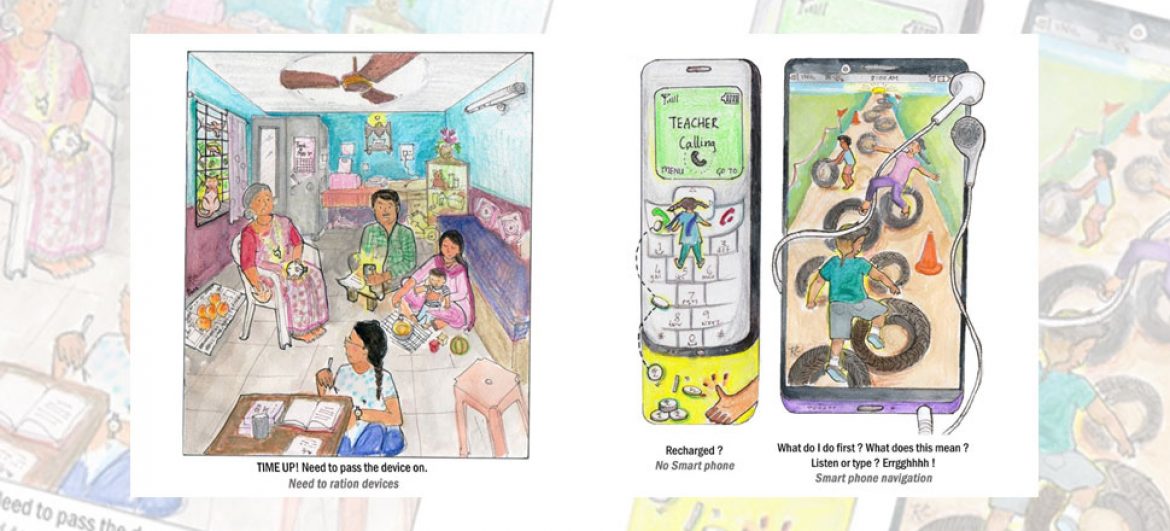Quis autem velum iure reprehe nderit. Lorem ipsum dolor sit nulla or narjusto laoreet onse ctetur adipisci.

Barriers to e-learning
What prevents children from vulnerable communities to access online resources?
From March 23, the online space exploded with the whole world suddenly turning to the arts and reading. Many websites opened up, publishers began to offer free reading resources, and authors and creators began to put out content for our free use. But, for many of us who work with communities new to literacy, the interest, skills and abilities around reading itself are limited, leave alone reading on virtual platforms. One can’t just assume people own a smart device that has high-speed data packs, and is accessible. We decided to do a survey amongst our small network of children and communities who access the Bookworm library through our school program or our outreach program. We soon realised that having data on mobile phones was useless.
We learnt that many families could not recharge their phones as they had no income in April; for most, data packs did not support streaming all video content or speakers and sound capabilities were weak
More than 50% of the numbers called were either ‘out of range’, ‘switched off’ or ‘the number does not exist’. When we did get through, we spoke to a family member and, eventually, to the child directly. More than 60% of our call list indicated that families did not own smartphones. We learnt that many families could not recharge their phones as they had no income in April; for most, data packs did not support streaming all video content or speakers and sound capabilities were weak. Overall, each family member had only limited access to the phone. We then wondered, if this was the state of the nation, how can we give these children who are struggling with literacy, a virtual education?? What can compel us to think about the children for whom the digital divide is a reality? Together, let’s think of a solution!
Share your thoughts and ideas on how nonprofits can work together to make resources accessible to all children on mail@bookwormgoa.in.
